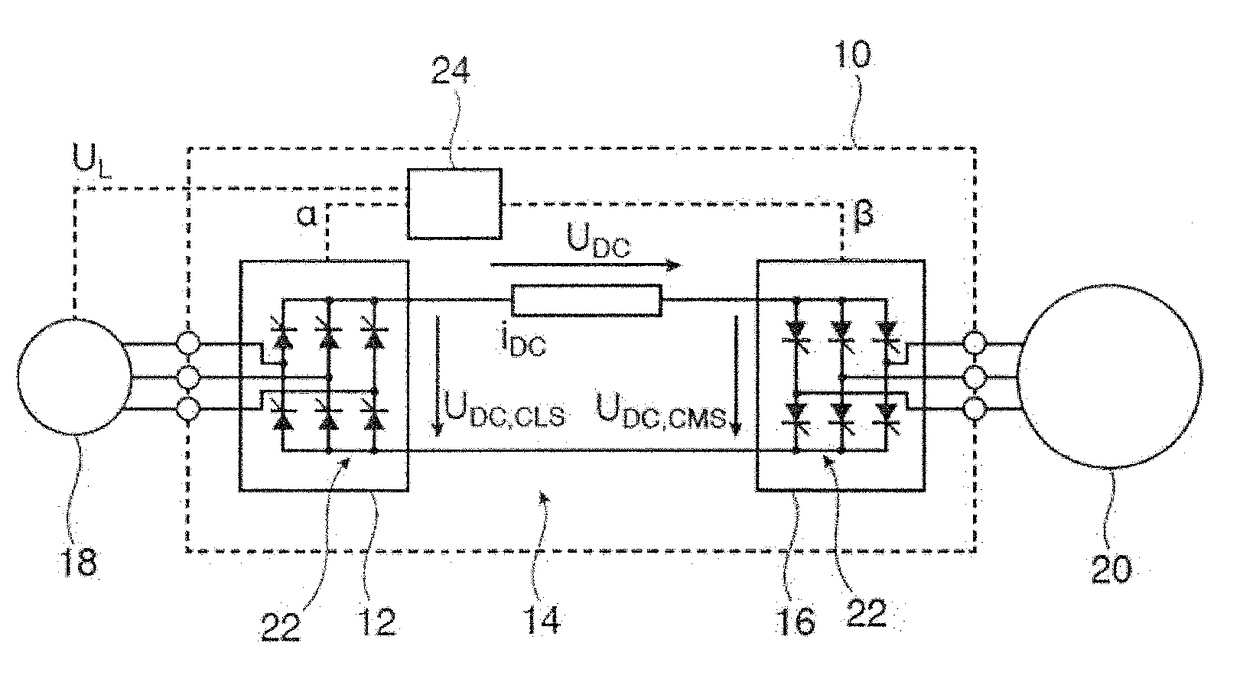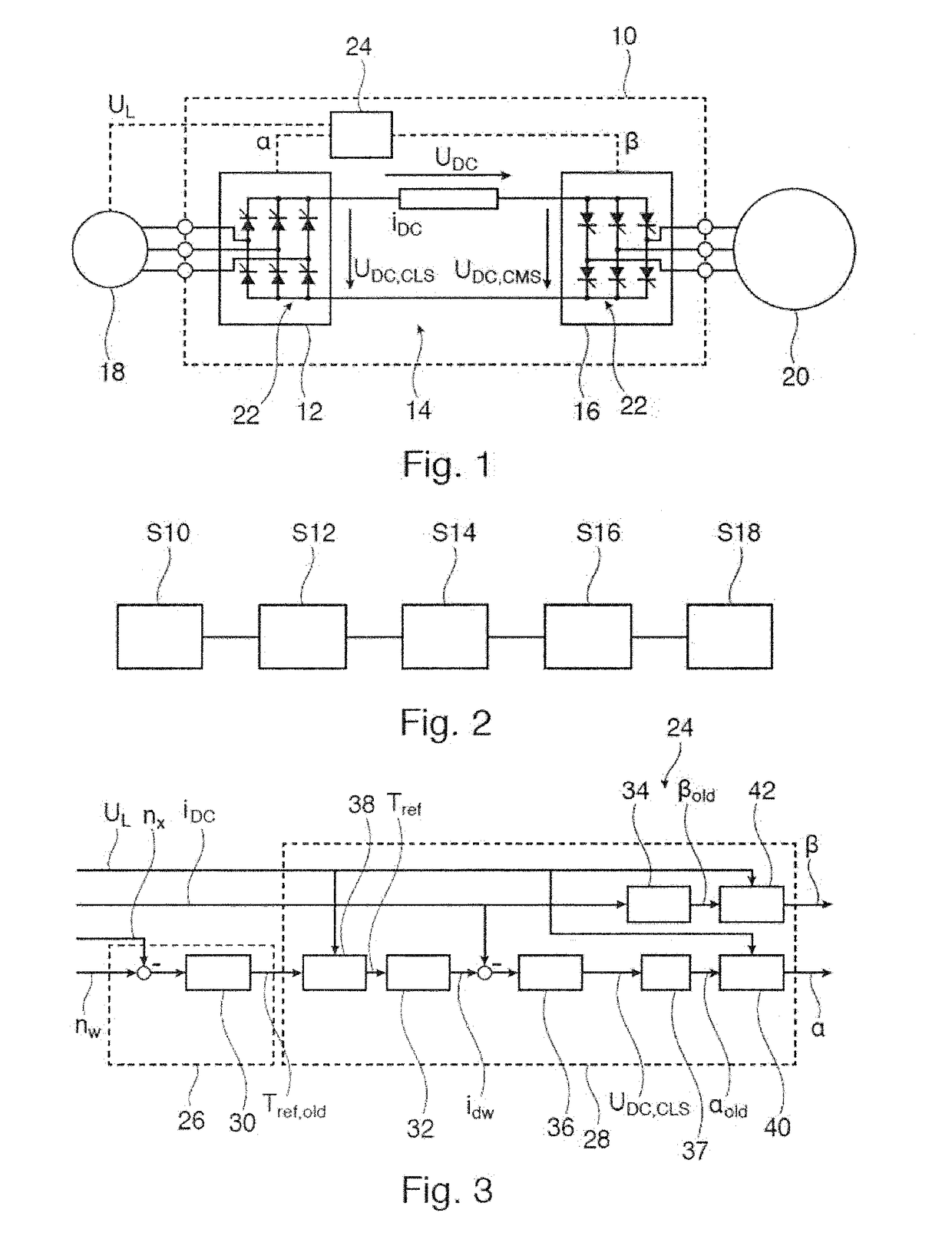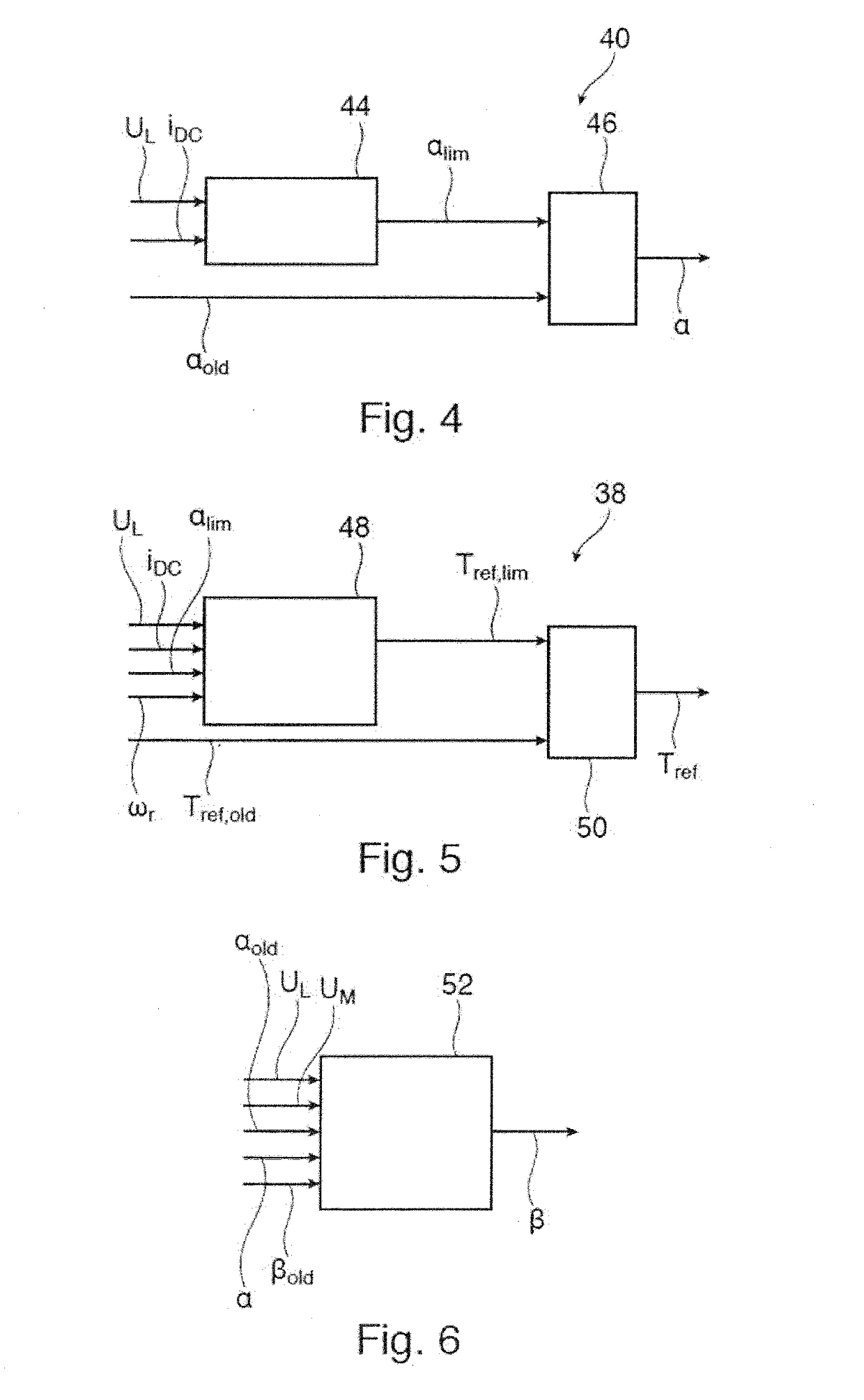Controlling a load commutated converter during undervoltage
a load commutation converter and load technology, applied in the field of load commutation converters, can solve the problems of weak grid, low load efficiency, and low load efficiency, and achieve the effect of reducing load power consumption and restricting the maximum torque of the machin
- Summary
- Abstract
- Description
- Claims
- Application Information
AI Technical Summary
Benefits of technology
Problems solved by technology
Method used
Image
Examples
Embodiment Construction
[0010]In general, in one approach of dealing with undervoltage condition in the grid, the normal operation of the load commutated converter may be continued in the case of an undervoltage condition. If the AC or DC currents are too large at the return of the nominal grid voltage, the drive may be tripped to prevent electrical damage.
[0011]With this approach, only small deviations from the nominal grid voltage may be accommodated. Larger deviations usually result in a depletion of the DC link inductance, because the machine-side converter drains more energy than can be provided by the line-side converter under the prevalent grid conditions. Overcurrent trips at the return of the grid voltage are also possible.
[0012]According to a second approach, if the grid voltage magnitude falls under a certain threshold (for example 80% of a nominal grid voltage), a trip may be activated stopping the operation of the converter. Such a threshold may be combined with a time condition, i.e. the grid...
PUM
 Login to View More
Login to View More Abstract
Description
Claims
Application Information
 Login to View More
Login to View More - R&D
- Intellectual Property
- Life Sciences
- Materials
- Tech Scout
- Unparalleled Data Quality
- Higher Quality Content
- 60% Fewer Hallucinations
Browse by: Latest US Patents, China's latest patents, Technical Efficacy Thesaurus, Application Domain, Technology Topic, Popular Technical Reports.
© 2025 PatSnap. All rights reserved.Legal|Privacy policy|Modern Slavery Act Transparency Statement|Sitemap|About US| Contact US: help@patsnap.com



